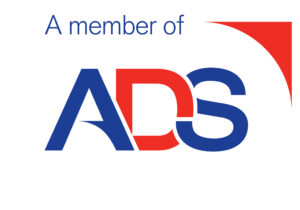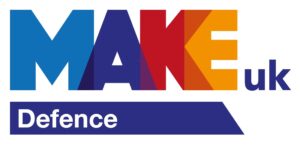Physical and natural barriers have long served for territorial delineation and control, such as the Great Wall or the Berlin Wall, or mountain ranges, and rivers physically marking sovereign authority. COVID-19 brings a new trend.
During peacetime, Border Security and Surveillance stabilise a government and its economy by contributing to the prevention of:
- Cross-border terrorism;
- Illegal immigration;
- Pandemic control;
- Smuggling.
During increased tension, a Border Security and Surveillance System helps:
- Secure national boundaries;
- Provide information to Intelligence Services;
- Screen infected people.
- Become an integral part of the National Security Infrastructure and defence.
COVID-19 creates an added dimension to pressure border security and surveillance, stress testing:
- Human Rights;
- Privacy;
- Freedom of Movement of citizens, goods, and services, including medicines and equipment;
- Pandemic Controls;
- Migrant Control and Screening.
Physical and natural barriers have long served for territorial delineation and control, such as the Great Wall or the Berlin Wall, or mountain ranges, and rivers physically marking sovereign authority. COVID-19 brings a new trend, the growth of invisible borders, that reliance on law to disengage migration, travel, and trade control from a territory. Unmooring of state power from a nation creates a new standard. The shifting border, not fixed in time and place; but comprised of legal portals, surveillance tools, and AI-powered risk assessments.
COVID-19 reminds us of the significance of borders. Much attention was paid to POTUS’s campaign promise to build an “impenetrable, physical, tall, powerful, beautiful southern border wall,”. The pandemic reveals that governments seeking to restrict mobility rely only partly (and increasingly rarely) on physical defences. The borders illustrated in an Atlas no longer always match with bordering functions that take place around the world. Completing an ESTA to visit the USA is an early example of frontier control outside of the actual border.
South Korea uses technology to contain Coronavirus. Is this new Korean technology? No, these tools deployed by Korean authorities are already available. What sets them apart is a political will to use them in support of public health.
For example, Korea’s COVID-19 patient #10422, pre-diagnosis, visited the Hanaro supermarket in Yangjae on 23rd March from 11:32 to 12:30, accompanied by his spouse, both wearing masks, transported in their car. 27th March, they visited the Yangjae flower market from 16:52 to 17:18, wearing masks. Then dinner at the Brooklyn The Burger Joint at Shinsegae Centum Mall from 18:42 to 19:10. This detailed record is publicly available, on websites, it is a demonstration of the extensive contact tracing carried out by Korean authorities.
This information collected from three sources:
- Electronic Transaction Data;
- Mobile Phone Location Logs;
- Surveillance Camera Footage, including the use of face recognition;
During the outbreak, information was repurposed to track both COVID-19 patients and suspected patients retroactively.
With no GPS or other locational services enabled, network providers can track phones with an accuracy of a kilometre or less as they log onto cells.
Surveillance footage has also been repurposed during the pandemic.
Korea’s ability to quickly re-task different sources of digital information is witness to the government’s efforts to learn from prior public health calamities.
Korean’s opinions about surveillance, during the pandemic, are overwhelmingly positive. Technologies used by Korean authorities are omnipresent in most countries. Banks and Credit Cards across the globe already log transactions. Network providers can record locational information for every device they serve. The technology is here, the political will and public desire to use it constructively in outbreak management is the necessary soft power.
SURVEILLANCE TECH FOR COVID-19
- Tracking Infection and Contagion Prevention
Contact Tracing is considered a critical tool. The Argentinian Co-Track app tracks users’ locations via the smartphone’s GPS. Other countries rely on Bluetooth proximity or a combination of GPS and Bluetooth data.
- Monitoring Lockdown Compliance
People can be tracked using smartphone location data.
- Encourage or Order – People to Return Home
A video published online showed a Chinese drone scolding a woman in Mongolia. “Yes Auntie, this is the drone speaking to you. You should not walk around without wearing a mask. You had better go back home and don’t forget to wash your hands.” says a disembodied voice from the drone.
- Outbreak Prediction
AI and big data are operating to manage the spread of disease, including this pandemic. Predictive analytics from big data helps to detect, predict and track outbreaks.
- Keeping People at Home
Heavy-handed surveillance and intimidation techniques to enforce quarantine orders are being tested; these vary from apps to wearable technology, “electronic fences” and even online shaming.
- Locate and Monitor the Infected
Peruvian health authorities launched a symptom-checker website where citizens who answer questions receive a preliminary diagnosis. The site is not anonymous, and users are required to provide their national ID numbers.
Controlled frontiers now have thermal scanning cameras installed surveying travellers. Those with high body temperatures are selected for further investigation.
The pandemic has reinforced the need for real-time information and border control. Security is improved by the addition of contact tracing and thermal scanning. Repurposing existing tracking techniques into existing integrated surveillance systems, enhances situational awareness; the critical factor at frontiers.
We are not condemned to a future of biosurveillance and dystopia. Repurposing and integration to provide a common operational picture of a pandemic is a technological experiment; the results will not be immediately apparent. Surveillance will deliver useful information in helping prevent the spread of the virus. Some governments will use the moment to expand their reach of invasive surveillance technology. These outcomes, like the virus itself, will leave a legacy felt by future generations.
Barry ET Harris MBE, is an independent consultant; he is a veteran of the British Army; he combines specialist operational experience with wisdom gained from extensive commercial consulting, executive and management expertise in his specialities gained in complex environments and high-risk jurisdictions worldwide.
Need advice?Contact us to discuss your requirements and how we can help







